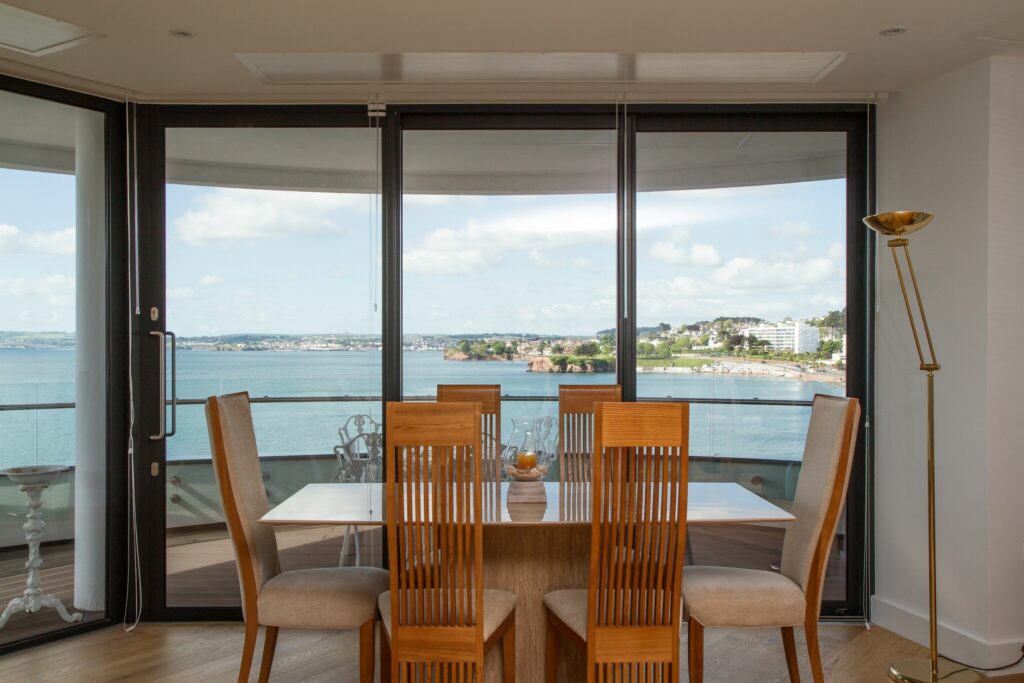
As a professional window fitter, you no doubt have a few horror stories to share about your customers. We’ve all been there, dealing with people who might think they know what they are talking about, but in reality, they have very little idea of what they require. Yet, despite being the expert with all of the knowledge, you often need to stand there, nod along politely, and then break the bad news. One of the most common problems you might run into for your customers, then, is helping them decide on door types. Two of the most common options are bi-folds and sliding doors, respectively.
Yet it does not take much for a customer to disregard your opinion on the matter. You are only the expert that they hired to do the job, so what do you know, right?
If you are trying to help your customers make the right choice in terms of door options, then we have a few recommendations for you below. Stick to the following points of contention, and you should find it easier to get your clients to take the best option for their property.
Comparing Bi-fold Doors and Sliding Doors
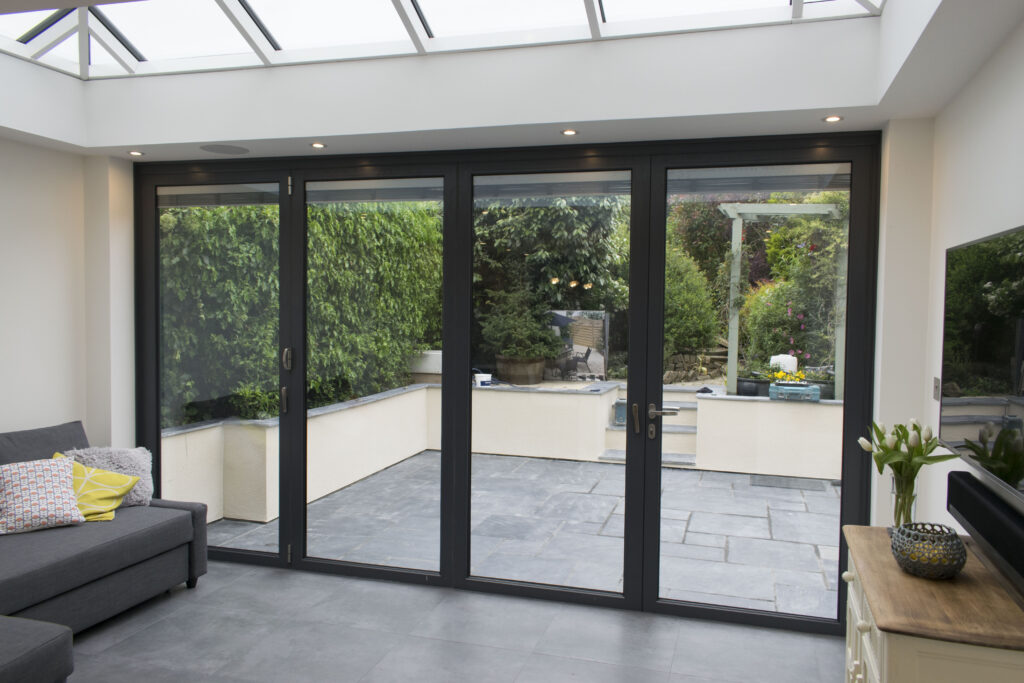
So that you can go ahead and make the best recommendations to your punters, we recommend you think about the following factors. We will break down what we believe are some of the most important aspects of choosing a door type. Then, we will try and give an idea of who is the ‘winner’ so you can make the best recommendations moving forward.
The size of the door
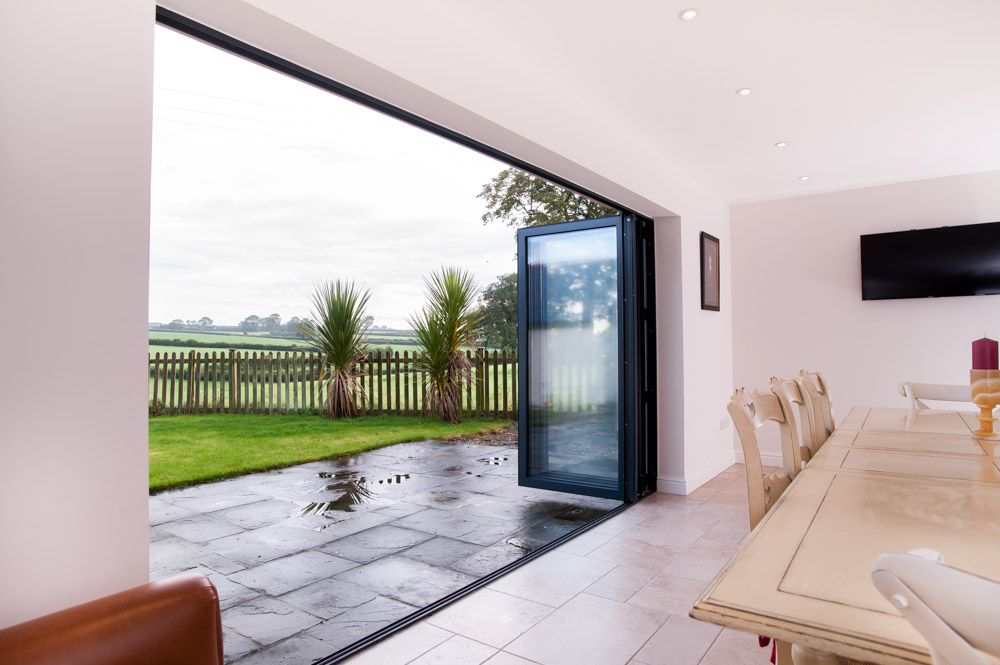
They say that size does not matter and in some places in this world that might be the case. When it comes to your doors, though, size does have a pretty significant meaning!
With that in mind, you might wish to look at the size of the doors as the first talking point. When you speak to a client, try and make it clear that bi-fold doors allow for a much greater opening size. They can open up as much as 90% of the room, which is great for letting in light, letting in air, and connecting the indoors to the outdoor.
By contrast, standard patio doors tend to offer around half the same level of opening, as they always require a fixed panel. If your customer is looking to maximise the clear opening space then bi-folds will always win the day here. Telling them that there is a 90% opening-up potential with bi-fold doors is usually enough to sway anyone concerned about sizing.
Verdict: Bi-folds.
The view permitted
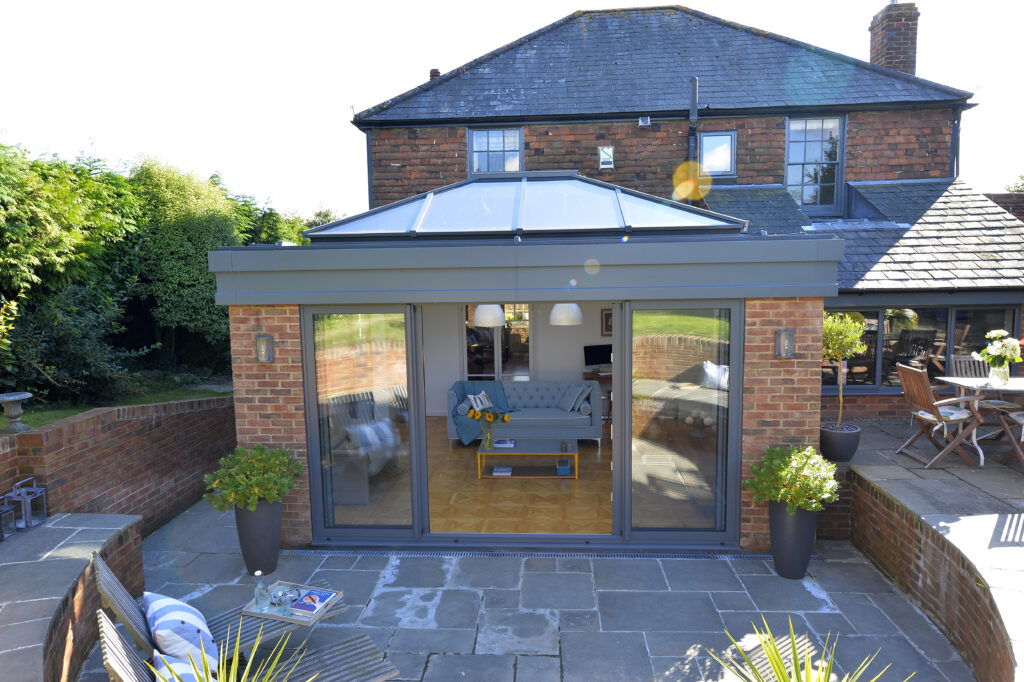
The next most important discussion about when choosing door types would be the kind of view that you get. When you look out the glass, what can you see?
For most, the patio is the clear winner here when it comes to improving visibility at home. If you have a nice view from your home, such as a lush garden or a nice piece of landscaping, go for sliding doors. These have much larger panes of glass and thus obstruct the view far less. And on particularly nice days, you can open up the doors and get a much better view of the stunning imagery ahead.
The large panes of glass are good for that panoramic view; compared to bi-fold doors, this is simply not the case. Bi-fold doors use door leaf designs which are much narrower, and the extra framing blocks the view. For the more minimalistic approach to viewing the landscape around your home, then, go for sliding doors.
Verdict: Sliding Doors.
The sliding mechanism
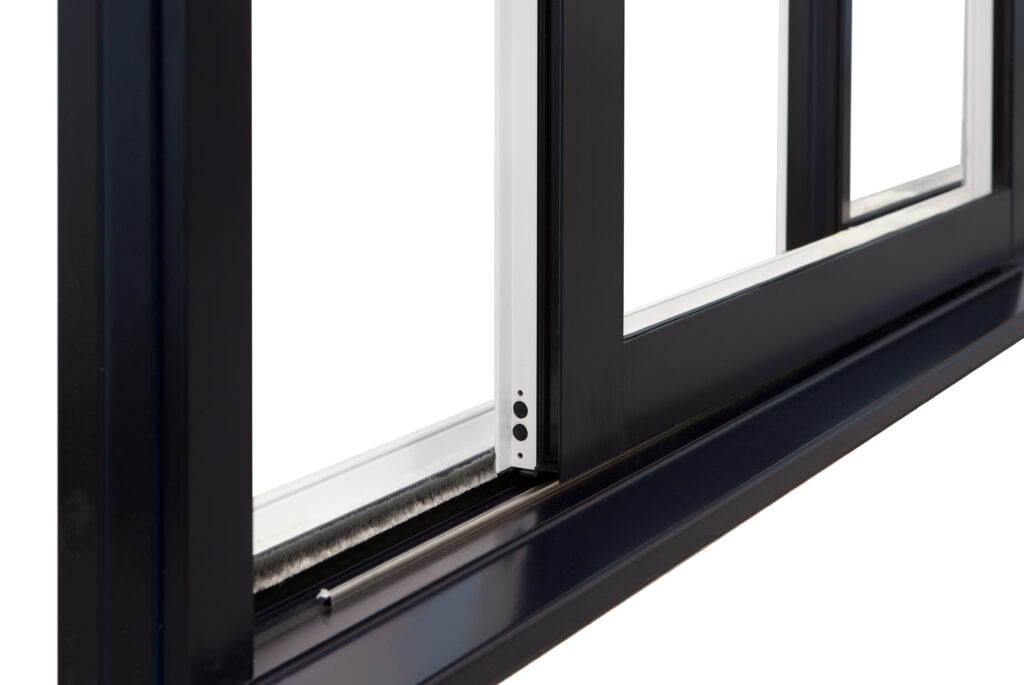
Some sliding doors are designed to be easy to open and to close, and to ensure the door meets your requirements, you need to look at the sliding mechanism. Inline sliders are fine on smaller doors, but larger doors might benefit from a lift-and-slide design instead. This means that the door is lifted up from the frame a little, and it means that there is little chance for catching and friction.
For those who are moving into a home where they might have limited physical strength, lift-and-slide designs make more sense. The lift and slide mechanism (like the one found on our Reynaers CP130 Sliding Doors) means that a huge glass door weighing over 300kg can be slid with relative ease.
Verdict: Sliding Doors.
The airflow capacity
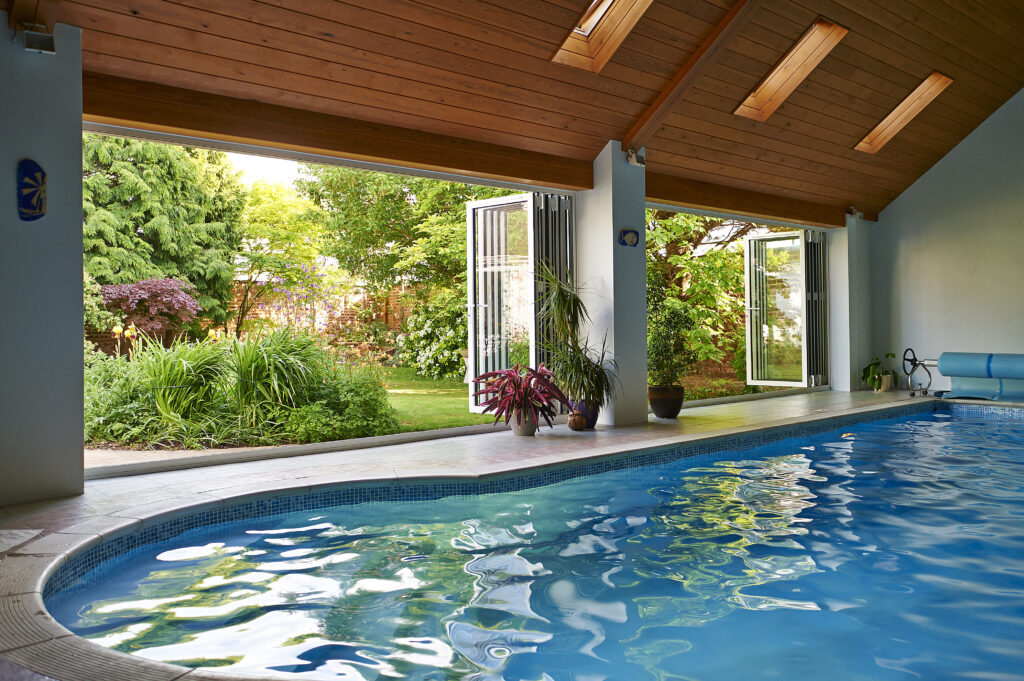
While you might be used to fitting doors and windows in places in the UK with minimal sunshine, many clients still want good airflow. So, if you were to compare the way that air can flow in and out of a room, the door type matters.
Out of the two primary door types, though, it would be fair to say that bi-folds are simply not as flexible as patio doors. Explain to your customer that bi-fold doors tend to be far less practical and require opening at least one of the doors for ventilation. If the bi-folds have a traffic door this may be left swinging in the wind, and it’s even less ideal on designs without a traffic door.
Compared to a patio, though, it’s simply nowhere near as effective. A patio can be slid open slightly to allow a crack of air in, or wider if it’s a hot day. The Reynaers CP130 patio is also lockable in the open position, allowing a small amount of airflow without compromising security.
If the customer is looking for something to help keep them cooler during the summer, patios are going to win the day here for sure. They offer far more flexibility and can be opened much wider to allow for greater airflow.
Verdict: Sliding Doors.
Entering and exiting
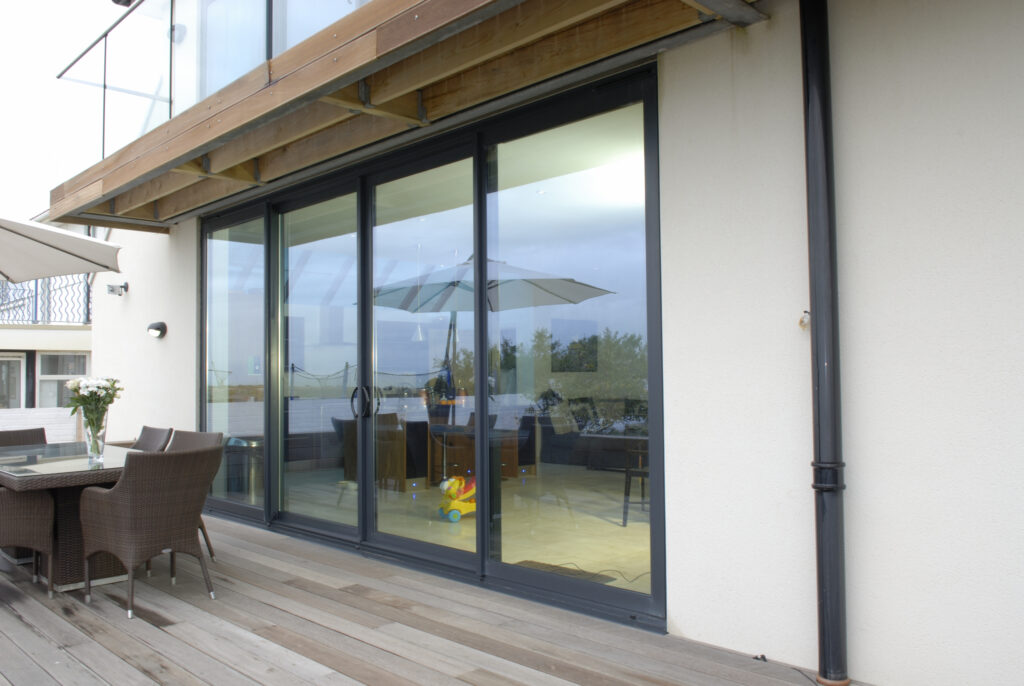
Of course, you want good doors that allow you to easily get outside with the minimum of fuss. With that in mind, many choose to go for bi-fold doors. They can be designed so that you have one ‘traffic door’ that allows you to get in and out without having to unlock all of the other door panes. This is very useful as it can help you to get in and out of the house in moments. However, if you do not have a traffic door installed, sliding doors provide the easiest entry point as they can be opened from both inside and out without having to deal with other doors.
Verdict: Bi-folds (with traffic door).
Ease of entry
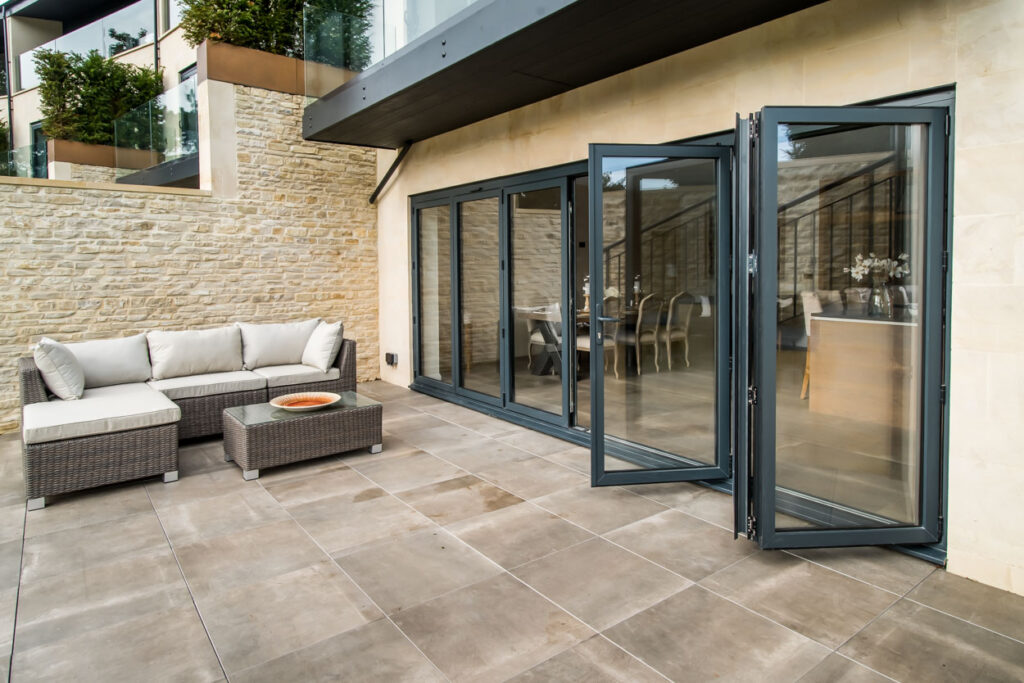
Another point to talk to your clients about would be the ease of entry. For us, bi-fold doors can provide the best ease of entry – so long as you get the right opening type. Most prefer bi-fold doors that open outward so that you do not have to worry about furniture on the inside being too close to the doors as they open/shut. Given sliding doors are much larger, they take up more room when open and larger doors can be heavier and more cumbersome to open. Bi-folds also come with more threshold options, so you can choose to have a step up or down and select flush thresholds for impaired access.
Verdict: Bi-folds.
Durability and longevity
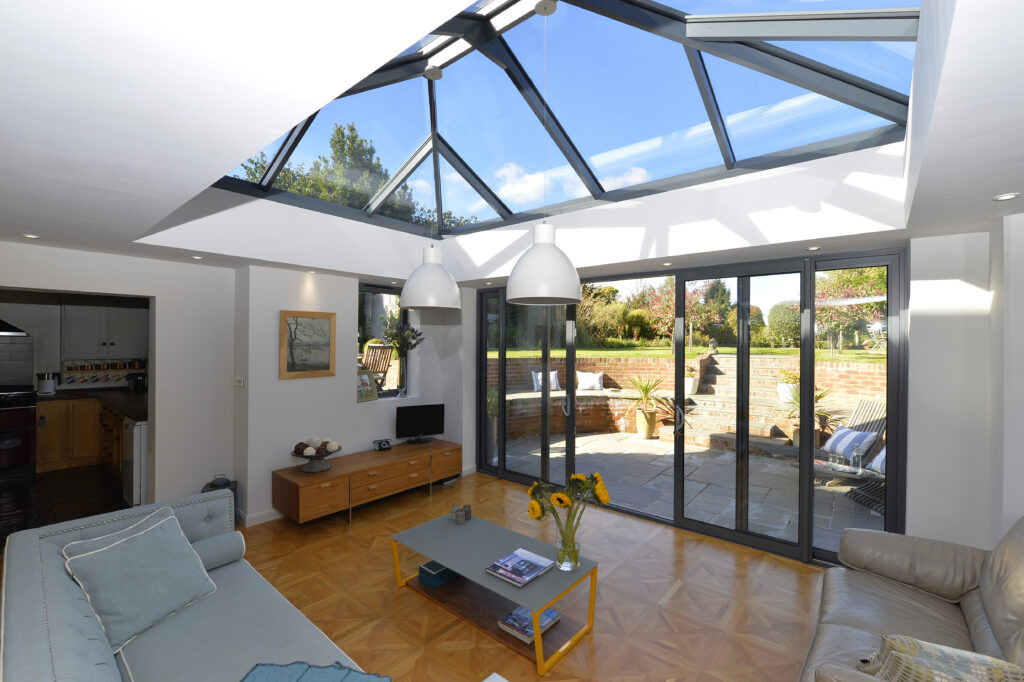
Since most bi-folds are attached using a set of rollers that run on the track, you are reliant upon quality rollers. You will also find that some inferior doors put the hinge rollers at the top of the door. If this happens, the added weight of the door being suspended from the frame could be transferred onto the lintel. This could add extra weight, and cause stability issues.
By contrast, sliding doors are almost always secured at the bottom and sit securely within a track. This means they are prone to fewer operational issues and are less likely to have issues surrounding how durable they are.
Verdict: Sliding Doors.
Cleanliness and care
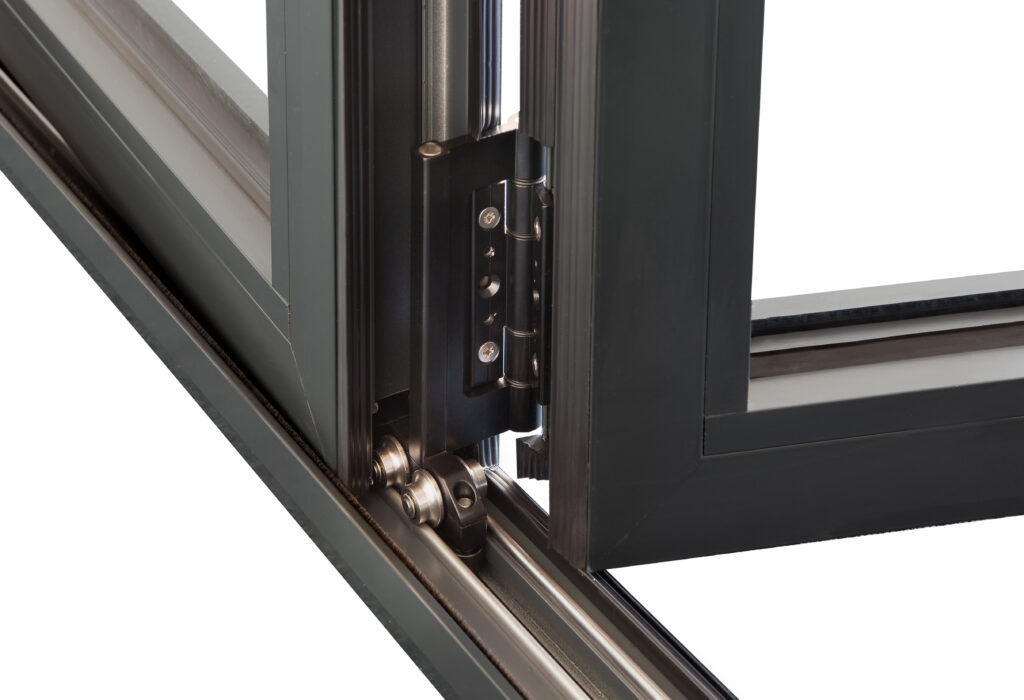
Your customers are likely going to want to know what the best options with regards to cleaning is – both the panes of glass and the tracks/rollers. The tracks must be kept clear for either type of door, which normally requires a quick vacuum and little else.
Some sliding doors come with a design where the track is harder to reach and clean due to the wheels attaching to the leaf of the door. This can make cleaning much harder, whereas with bi-fold doors you should have nothing like these issues. Bi-folds are generally easier to clean and to care for than sliding doors due to the ease of accessing the track for the most part.
Verdict: Bi-folds.
Making the right choice
Of course, as an expert in fitting yourself, you will know what your client should want. By having the above information on-hand though you can easily make a proper comparison based on all of the most important factors in choosing a door type.
It is not easy to choose the right kind of door for most people, but providing a good and valid comparison can simplify things. Keep this in mind, and it should be much easier to get your clients to choose the right door. Now, you can focus on fitting the right doors as opposed to banging your head against them in frustration!